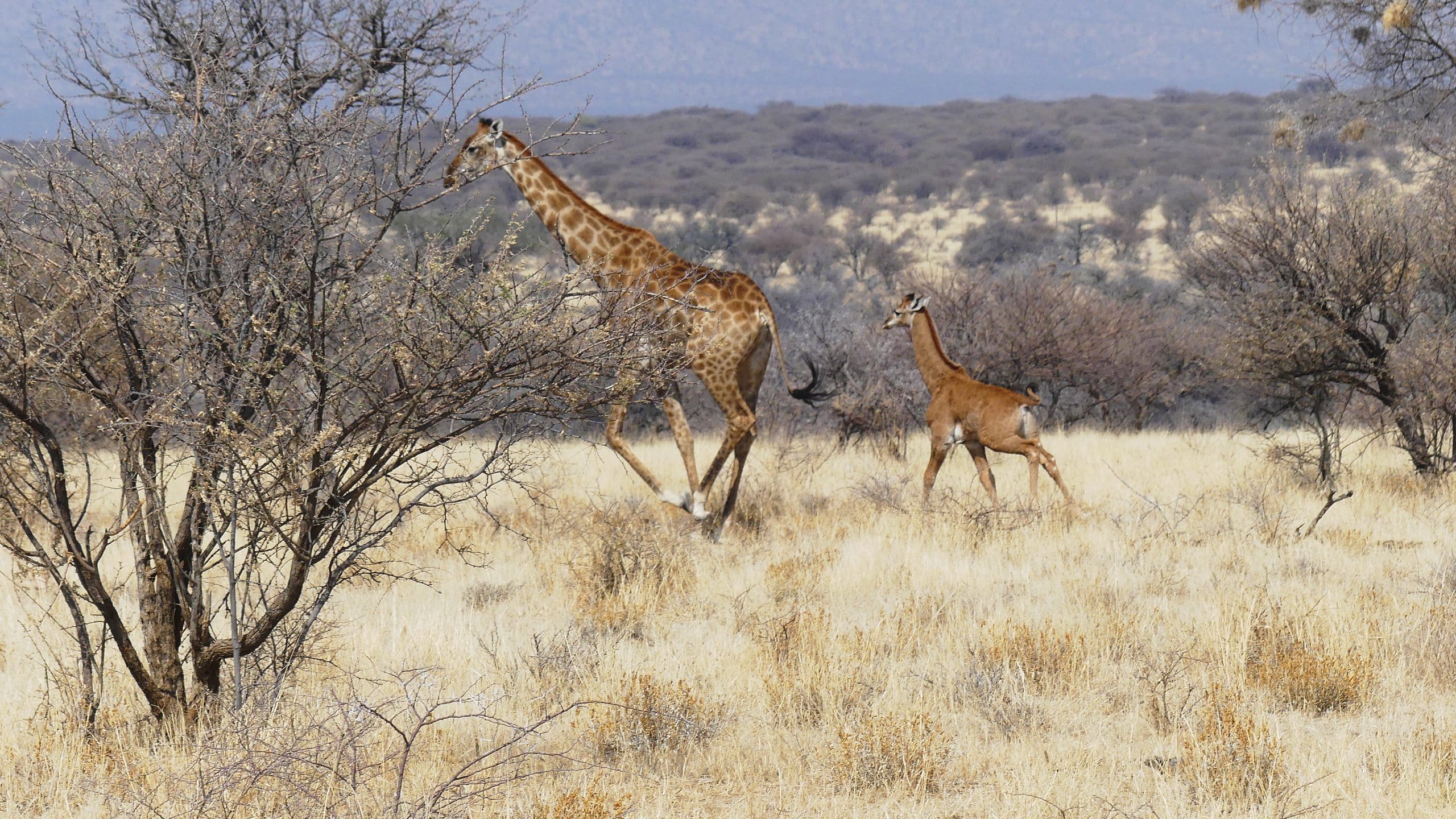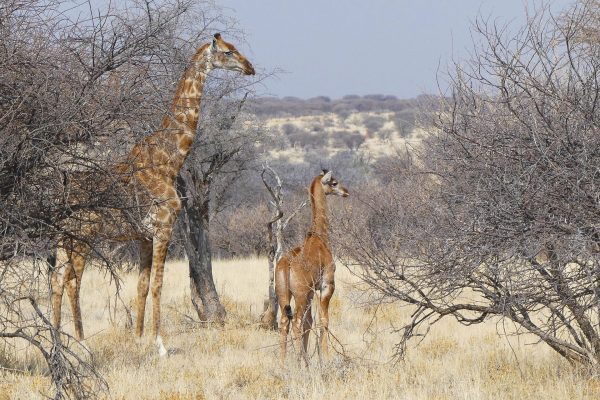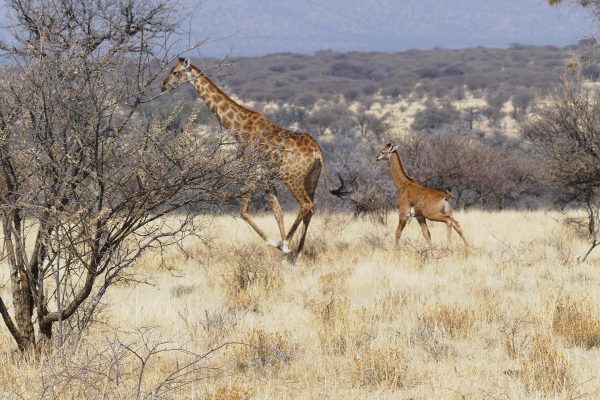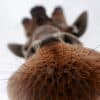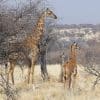Only weeks after the birth of a spotless giraffe in a zoo in the USA made international headlines, the first spotless giraffe was ‘spotted’ in the wild in Namibia. Photographed on a private game reserve in central Namibia, this young Angolan giraffe is the first spotless giraffe recorded in the wild in Africa.
No other animal is as quintessential African as the giraffe. Their unique silhouettes are as highly recognisable as are their iconic patterns that normally cover their bodies. Kipekee, the spotless reticulated giraffe that was recently born in a zoo in Tennessee in the USA has made headlines around the world. What were the odds that only weeks afterwards a similar giraffe was discovered in the wild at Mount Etjo Safari Lodge in central Namibia?
While this extraordinary plain brown giraffe has touched so many people around the globe, it has not helped to draw attention to the real issue that giraffe are facing – a silent extinction. Did you know that there are only about 117,000 giraffe remaining in all of Africa? That means that there is only ONE giraffe for every FOUR African elephant remaining in the wild. Giraffe have already become extinct in at least SEVEN African countries. And, to make matters even worse for these iconic animals, we now know that there are four distinct species of giraffe in Africa.
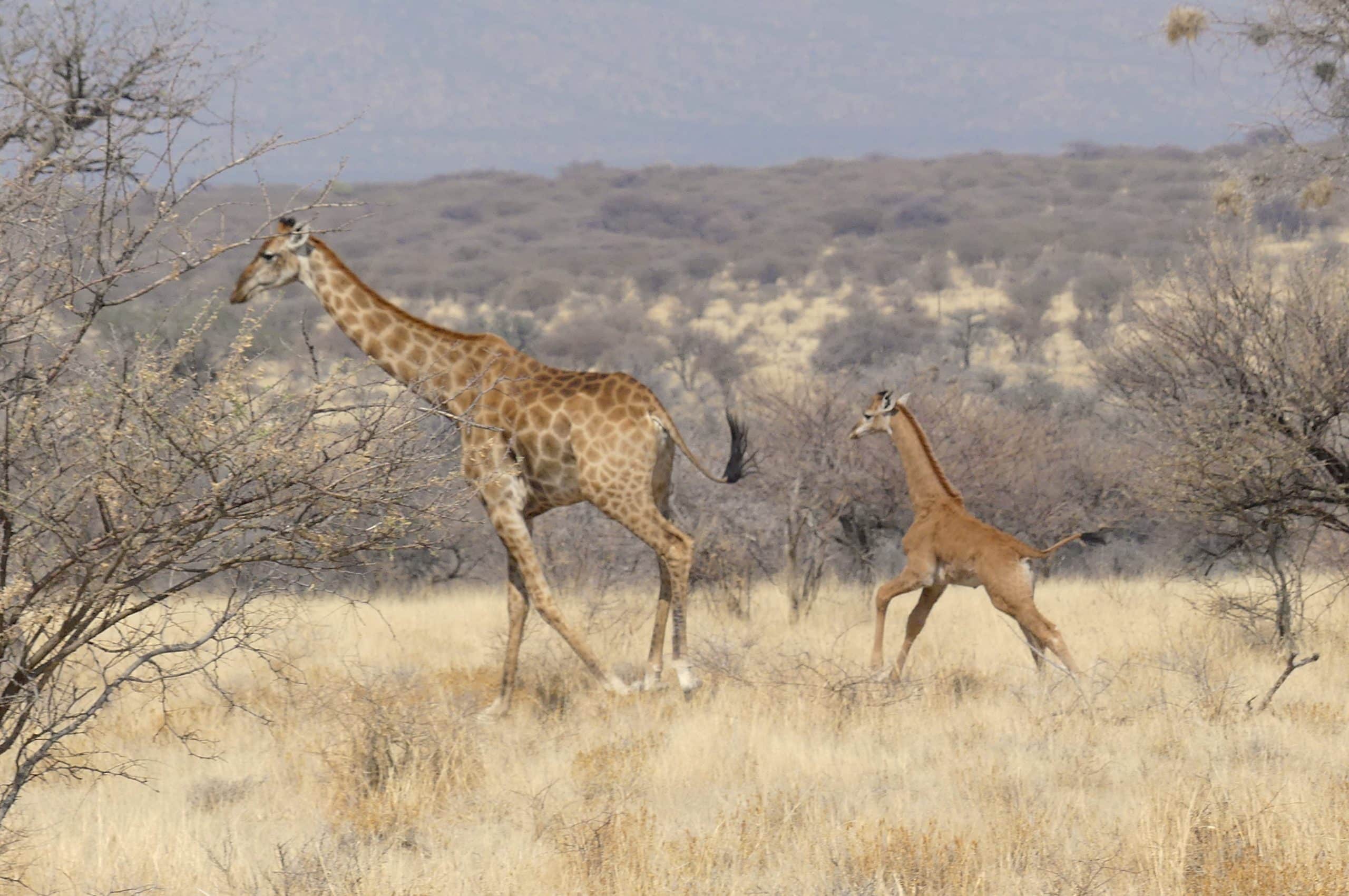
Each giraffe has a unique pattern, which makes them individually identifiable. This trade helps us greatly in counting them and with the help of AI programmes, we can determine exact giraffe numbers even for large populations.
However, this might be a little more difficult with this spotless giraffe; while she is unique in herself, she does not have a pattern to distinguish her from others. Luckily, giraffe without spots are a rare phenomenon. Indeed, before the discovery of the Namibian spotless Angolan giraffe, there were only two records of such brown giraffe, both in zoos in Japan in 1972 and most recently in the USA. While it is not uncommon for colour variations or changes in spot or stripe patterns to be observed in various species, the cause for these variations is often unknown.
“The lack of spots could be caused by genetic mutations or recessive genotype in one or more genes related to the pattern, but without detailed genetic analysis, these are mere speculations. GCF together with our partner, the Senckenberg Biodiversity and Climate Research Centre, has done the most detailed research on giraffe genetics in the wild, but it would be difficult to comment on the specifics of these two giraffe,” says Dr Julian Fennessy, GCF’s Co-founder and Director of Conservation.
“Maybe we do not always need to have explanations for everything. Why don’t we simply marvel about the wonders of nature?!” comments Stephanie Fennessy, GCF’s Executive Director and Co-founder. “Giraffe are in trouble and if we don’t act now, our grandchildren might not be able to see any giraffe in the wild when they grow up. That is what really worries me! But the good news is that it is not too late! If we act now, we can all stand tall for giraffe and secure a future for these gentle giants in the wild.”
GCF believes that these two spotless giraffe can inspire people to stand tall for giraffe and to raise critical funds to conserve Namibia’s unique spotless giraffe baby and all other giraffe populations in the wild in Africa before it is too late. If you want to help, please visit our website and donate.

